Ronnie Coleman, an eight-time Mr. Olympia champion, is widely regarded as one of the greatest bodybuilders in history.
His freakish muscle mass, coupled with extraordinary strength and a relentless work ethic, set him apart from his contemporaries and solidified his status as a legend in the sport.
Ronnie Coleman’s training techniques and use of performance-enhancing drugs (PEDs) have long been topics of discussion and debate in the fitness and bodybuilding communities.
Recently, Dr. Mike Israetel, an exercise scientist known for his analytical approach to training, offered a detailed critique of Ronnie Coleman’s methods, shedding light on both the positive aspects and potential pitfalls of his approach.
Ronnie Coleman: The Man, The Myth, The Legend
The Early Years and Rise to Fame
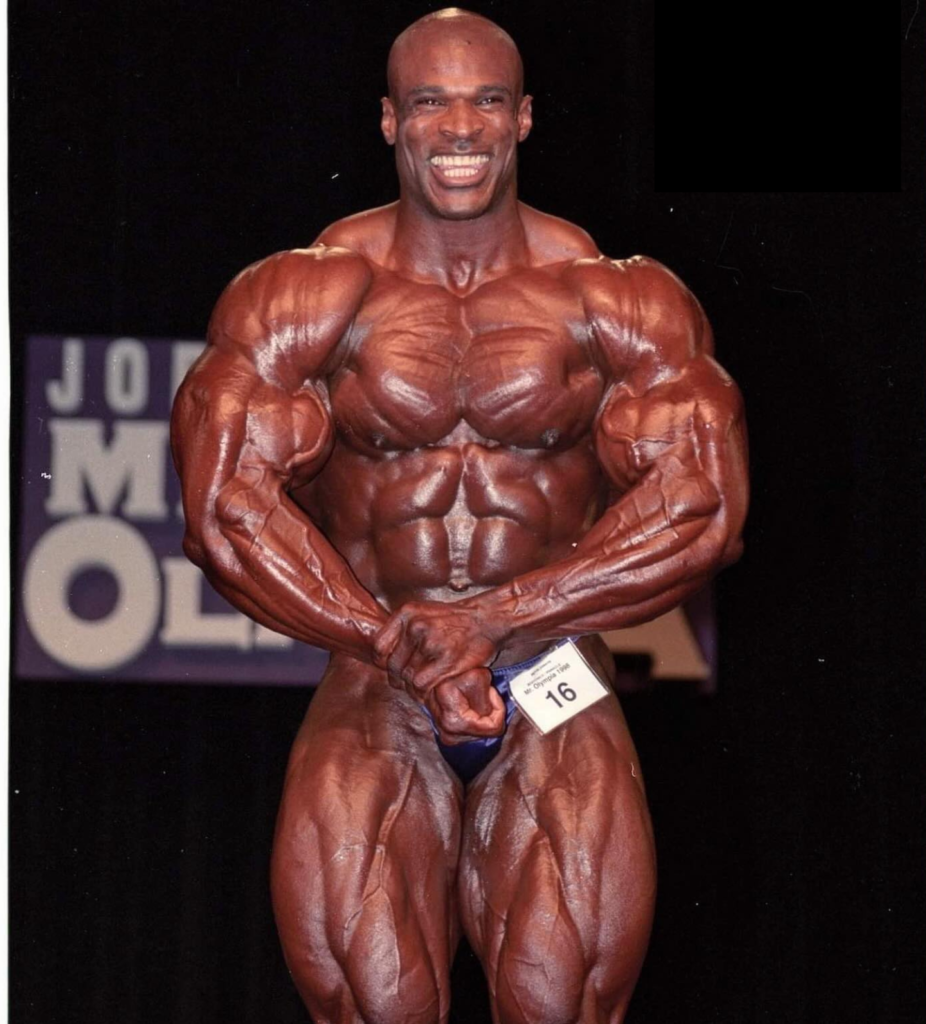
Ronnie Coleman was born on May 13, 1964, in Monroe, Louisiana, and grew up in a modest household in Bastrop.
From a young age, he displayed an interest in sports, particularly football, where he excelled as a middle linebacker in high school.
After graduating from Grambling State University with a degree in accounting, Ronnie Coleman struggled to find work in his field and took on various odd jobs to make ends meet.
His life took a dramatic turn when he was introduced to bodybuilding at Metroflex Gym in Arlington, Texas, by Brian Dobson, who recognized his potential and offered him a free gym membership in exchange for competing in bodybuilding competitions.
Ronnie Coleman’s ascent in the world of bodybuilding was nothing short of meteoric. After winning his first Mr. Texas competition in 1990, he quickly rose through the ranks, culminating in his first Mr. Olympia title in 1998.
Over the next seven years, Ronnie Coleman would dominate the sport, winning eight consecutive Mr. Olympia titles and establishing himself as one of the most formidable competitors the sport had ever seen.
The Physical Marvel: Ronnie Coleman’s Unmatched Size and Strength
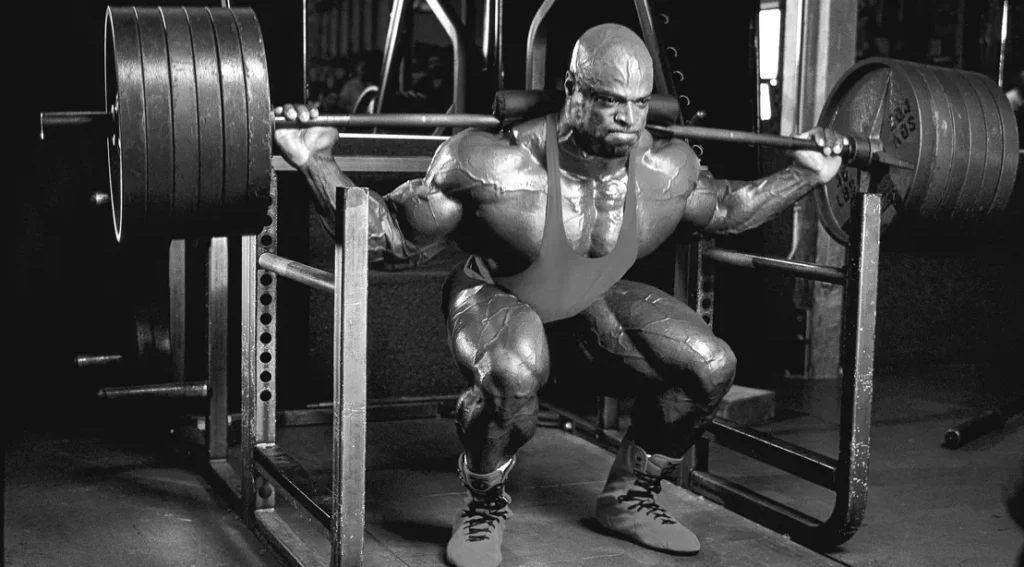
Ronnie Coleman’s physique was the stuff of legend. Standing 5 feet 11 inches tall and weighing in at around 297 pounds during his peak competition years, Ronnie Coleman was a behemoth of muscle.
His size and conditioning were unmatched, and his ability to combine sheer mass with symmetry and definition made him a standout on the competitive stage.
But it wasn’t just his size that set Ronnie Coleman apart—it was his incredible strength.
Ronnie Coleman’s training sessions were the stuff of legend, with feats of strength that boggled the minds of even the most seasoned athletes.
From 800-pound deadlifts and squats to leg pressing 2,300 pounds, Ronnie Coleman’s workouts were a spectacle of power and endurance.
Dr. Mike Israetel’s Critique: Analyzing Ronnie Coleman’s Training Techniques
The Role of Intensity and Volume in Ronnie Coleman’s Training
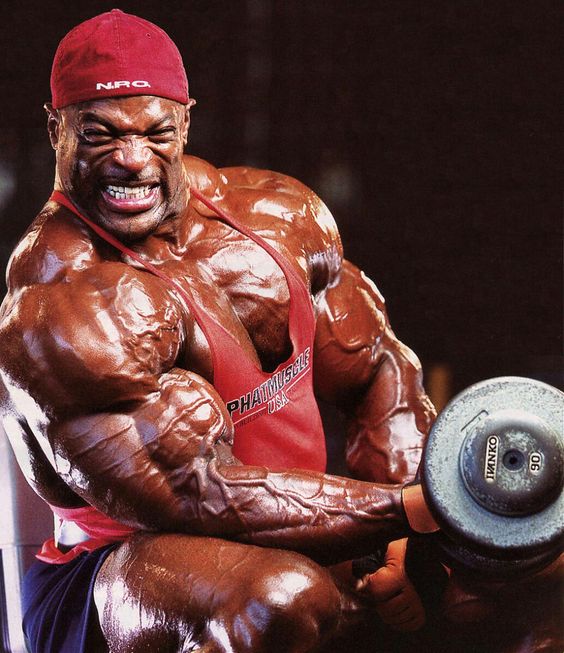
Dr. Mike Israetel, a respected exercise scientist and co-founder of Renaissance Periodization, is known for his in-depth analysis of training techniques used by athletes across various disciplines.
In his critique of Ronnie Coleman’s training methods, Israetel first acknowledged the incredible intensity and volume that characterized Ronnie Coleman’s workouts.
Ronnie Coleman’s training philosophy was simple: lift heavy, lift often, and push your body to its absolute limits.
This approach was evident in his legendary workouts, where he would routinely lift weights that were far beyond what most bodybuilders would even consider.
Israetel highlighted Ronnie Coleman’s use of heavy weights and high volume as both a strength and a potential weakness in his training regimen.
On one hand, the sheer intensity of his workouts allowed Ronnie Coleman to build an unprecedented level of muscle mass and strength.
His ability to handle 800-pound squats and deadlifts, and to row 225 pounds with ease, spoke to his incredible power and conditioning.
However, Israetel also pointed out that this approach came with significant risks.
The constant strain on Ronnie Coleman’s body from such heavy lifting likely contributed to the numerous injuries and surgeries he endured in his post-competition years.
Israetel suggested that while Ronnie Coleman’s training methods were effective in the short term, they may not have been sustainable in the long run.
The Technique: Effective or Risky?
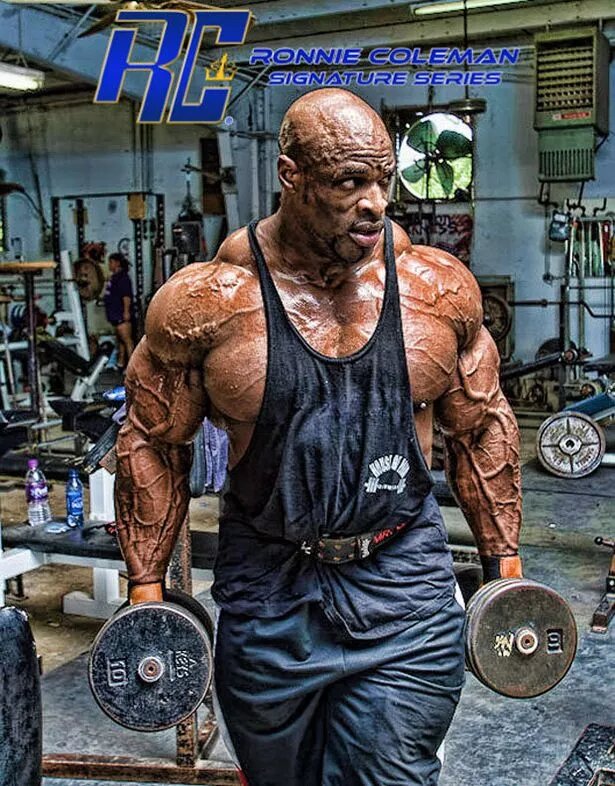
One of the key aspects of Ronnie Coleman’s training that Dr. Mike Israetel critiqued was his technique. Ronnie Coleman was known for his explosive power and ability to lift enormous weights, but his technique was not always textbook perfect.
Israetel noted that while Ronnie Coleman’s technique was stable and consistent for him, it was not always ideal from a biomechanical standpoint.
For example, Ronnie Coleman’s form on exercises like barbell rows and squats was sometimes less than perfect, with a focus on moving heavy weights rather than maintaining strict form.
Israetel pointed out that while Ronnie Coleman’s approach worked for him, it may not be advisable for other athletes to replicate his technique without considering their own biomechanics and limitations.
Ronnie Coleman’s technique allowed him to move massive amounts of weight, but it also placed a tremendous amount of stress on his joints and connective tissues.
This stress, combined with the high volume and intensity of his training, likely contributed to the wear and tear on his body that eventually led to multiple surgeries and ongoing health issues.
The Psychological Edge: Mental Toughness and Focus
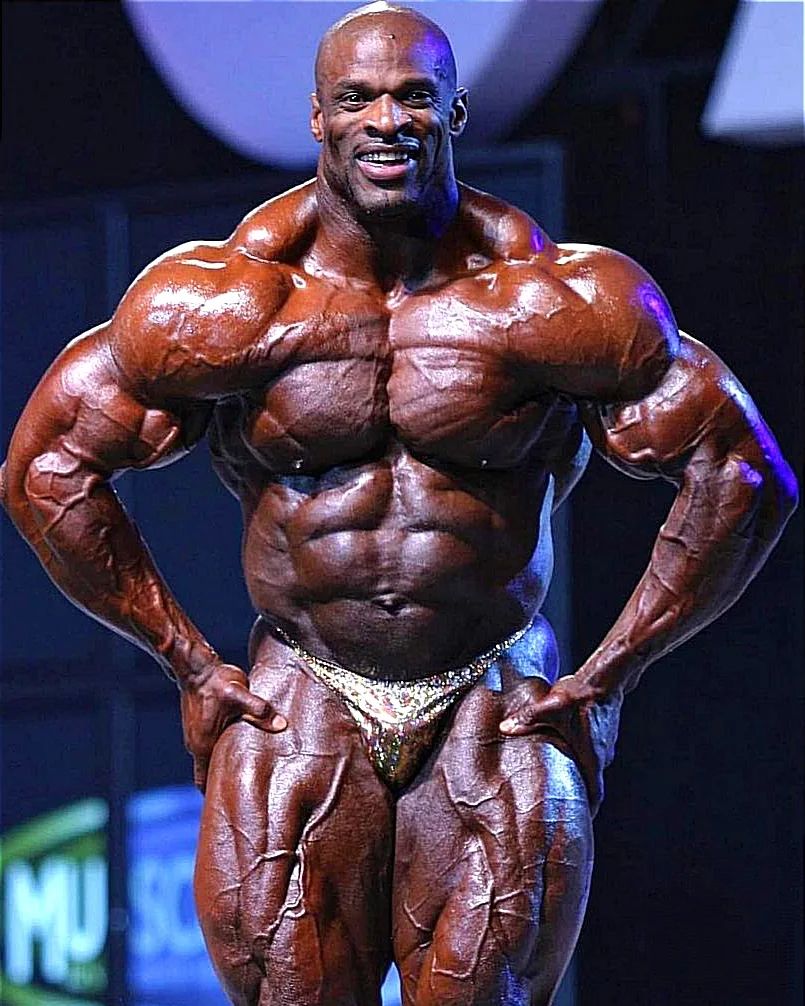
In addition to his physical prowess, Ronnie Coleman’s mental toughness was a crucial component of his success.
Dr. Mike Israetel emphasized that Ronnie Coleman’s ability to push through pain and fatigue, and his relentless focus on achieving his goals, were key factors in his dominance of the sport.
Ronnie Coleman’s famous catchphrase, “Lightweight, baby!” became a mantra that embodied his approach to training—no weight was too heavy, no challenge too great.
Israetel highlighted the importance of mental toughness in bodybuilding, noting that Ronnie Coleman’s ability to maintain his focus and intensity throughout his training sessions was a major contributor to his success.
However, Israetel also cautioned that this level of intensity and focus can come at a cost.
The mental and physical demands of Ronnie Coleman’s training regimen were immense, and while they helped him achieve greatness, they also took a toll on his body and mind.
Israetel suggested that aspiring bodybuilders should strive to find a balance between pushing their limits and taking care of their overall health and well-being.
The Role of Performance-Enhancing Drugs (PEDs)
The Reality of PED Use in Bodybuilding
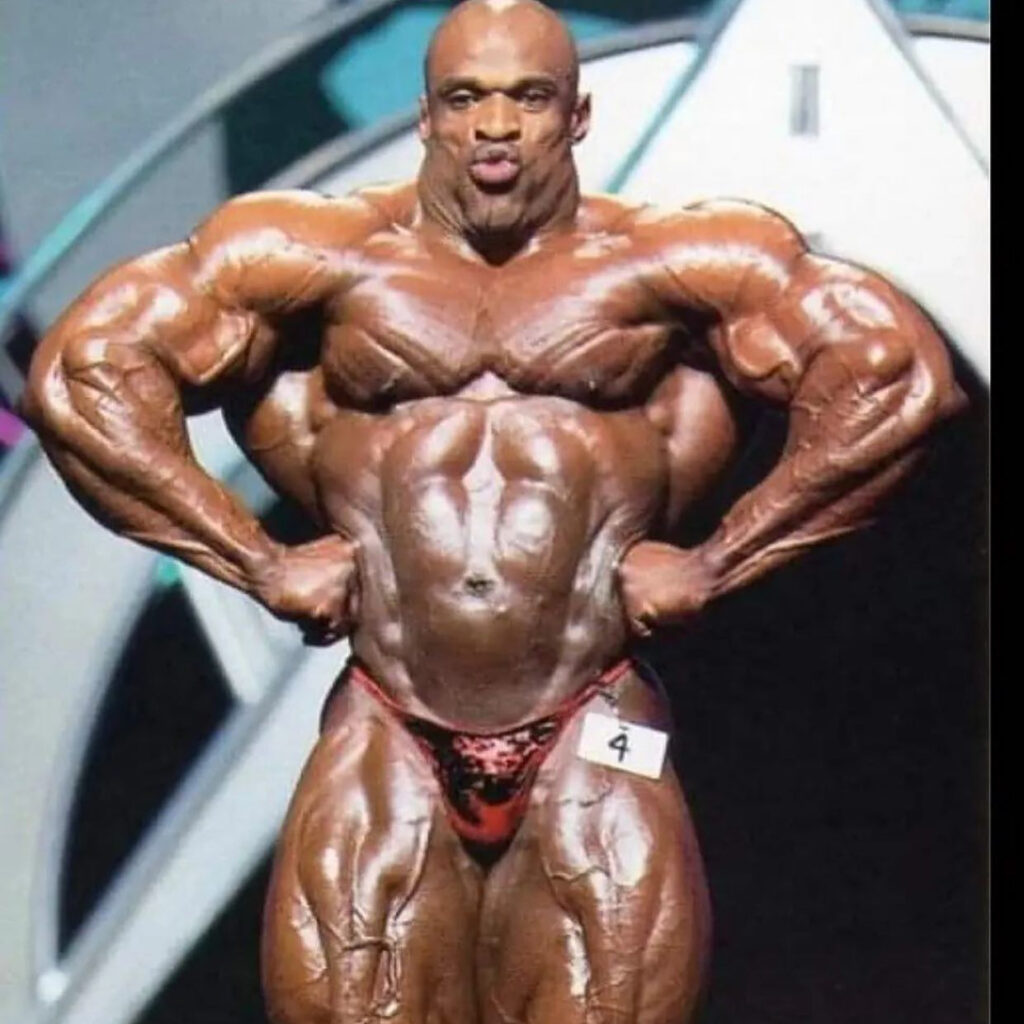
Ronnie Coleman’s use of performance-enhancing drugs (PEDs) has been a topic of much discussion and debate within the bodybuilding community.
While Ronnie Coleman has been open about his use of PEDs, including anabolic steroids and growth hormone, the extent of their role in his success is often a subject of speculation.
Dr. Mike Israetel addressed this issue in his critique, providing a nuanced perspective on the use of PEDs in bodybuilding.
Israetel noted that PEDs have been a part of the bodybuilding landscape for decades, and Ronnie Coleman’s era was no exception.
The use of anabolic steroids, growth hormones, insulin, and other compounds was common among top competitors, and Ronnie Coleman was no different.
Israetel pointed out that while PEDs can enhance muscle growth, strength, and recovery, they are not a substitute for hard work and dedication.
Ronnie Coleman’s success was not solely due to his use of PEDs; it was the result of a combination of factors, including his genetics, training, diet, and mental toughness.
The Evolution of PED Use in the 1990s and 2000s
Dr. Mike Israetel also discussed the evolution of PED use in bodybuilding during the 1990s and 2000s, noting that the landscape of drug use was different in Ronnie Coleman’s era compared to today.
During the 1990s, the use of compounds like trenbolone, high-dose growth hormone, and insulin became more common, and the protocols for using these drugs became more sophisticated.
Israetel noted that while the use of PEDs was more straightforward in Ronnie Coleman’s time, it was still a significant factor in the sport.
Israetel also highlighted the potential risks associated with PED use, particularly when used in high doses or in combination with other substances.
The long-term health effects of PED use are still not fully understood, and many bodybuilders, including Ronnie Coleman, have experienced health issues that may be related to their use of these drugs.
Israetel emphasized the importance of understanding the risks and benefits of PED use and urged athletes to approach their use with caution.

The Ethical Considerations of PED Use
The use of PEDs in bodybuilding raises important ethical questions, particularly regarding fairness and the health risks associated with their use.
Dr. Mike Israetel touched on these issues in his critique, acknowledging that while PEDs are a reality in the sport, they also present significant challenges.
The pressure to use PEDs in order to compete at the highest level can be immense, and the potential health risks associated with their use cannot be ignored.
Israetel suggested that the bodybuilding community needs to have an open and honest conversation about the role of PEDs in the sport.
He argued that while PEDs can enhance performance, they should not be seen as a requirement for success. Instead, the focus should be on training, nutrition, and mental toughness, with PEDs seen as a supplement rather than a substitute for hard work.
Israetel also emphasized the importance of educating athletes about the risks and benefits of PED use, so they can make informed decisions about their health and careers.
Learning from Ronnie Coleman’s Career: What Can We Take Away?
The Importance of Balance in Training
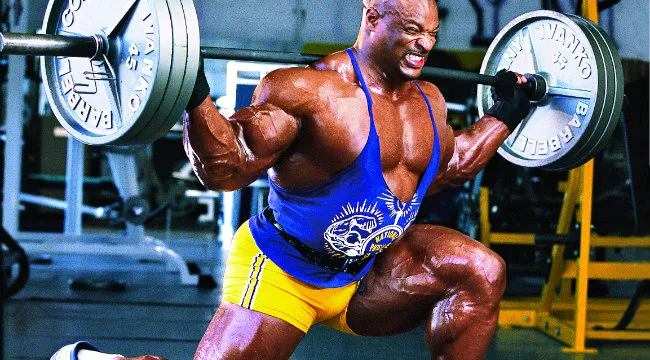
One of the key lessons from Ronnie Coleman’s career, as highlighted by Dr. Mike Israetel, is the importance of balance in training.
Ronnie Coleman’s approach to training was characterized by extreme intensity and volume, which allowed him to achieve unprecedented levels of muscle mass and strength.
However, this approach also came with significant risks, including the potential for injury and long-term health issues.
Israetel suggested that while it is important to push yourself in training, it is also crucial to listen to your body and find a balance between intensity and recovery.
This means incorporating periods of rest and active recovery into your training program, as well as paying attention to proper technique and form to minimize the risk of injury.
By finding this balance, athletes can achieve their goals while also taking care of their long-term health and well-being.
The Role of Genetics in Bodybuilding
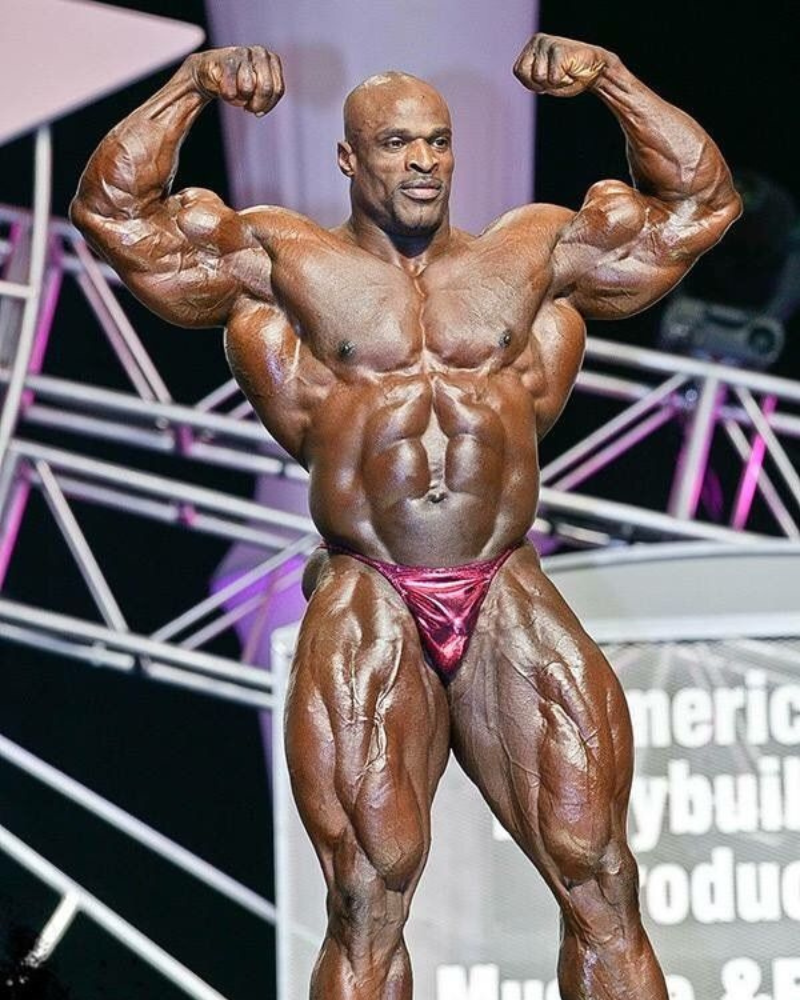
Another important takeaway from Ronnie Coleman’s career is the role of genetics in bodybuilding.
Ronnie Coleman’s incredible size, strength, and conditioning were in part due to his unique genetic makeup, which allowed him to build muscle and recover from intense training at a rate that most people could not match.
While hard work and dedication are essential components of success in bodybuilding, genetics also play a significant role in determining an athlete’s potential.
Dr. Mike Israetel emphasized that while it is important to work hard and strive to reach your full potential, it is also important to recognize your own limitations and work within them.
This means setting realistic goals based on your individual genetics and focusing on improving yourself rather than comparing yourself to others.
By understanding and working with your genetic potential, you can achieve the best possible results while minimizing the risk of injury and burnout.
The Legacy of Ronnie Coleman
Ronnie Coleman’s legacy in the world of bodybuilding is undeniable. His eight Mr. Olympia titles, incredible strength, and larger-than-life personality have made him a legend in the sport, and his influence continues to be felt to this day.
Ronnie Coleman’s approach to training and his use of PEDs have sparked discussions and debates that continue to shape the sport of bodybuilding.
Dr. Mike Israetel’s critique of Ronnie Coleman’s training techniques and PED use provides valuable insights into what made Ronnie Coleman successful, as well as the potential risks and challenges associated with his approach.
By examining Ronnie Coleman’s career, we can learn important lessons about the importance of balance, the role of genetics, and the ethical considerations of PED use in bodybuilding.
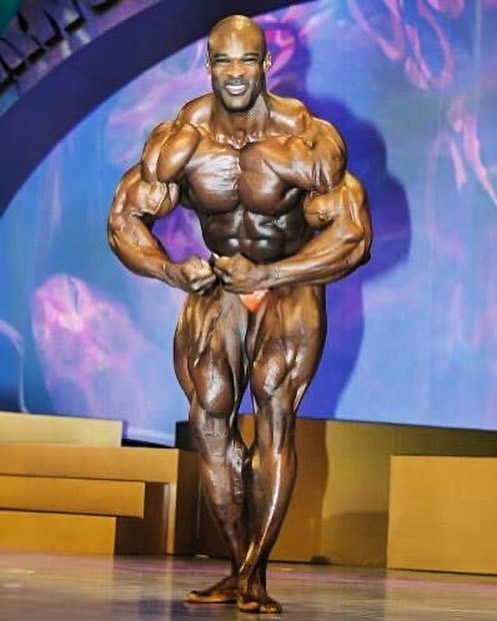
Ronnie Coleman’s Impact on Future Generations
Even in retirement, Ronnie Coleman continues to inspire and influence up-and-coming athletes.
His story is a testament to the power of hard work, dedication, and mental toughness, and his legacy serves as a reminder of what can be achieved with the right combination of factors.
Ronnie Coleman’s impact on the sport of bodybuilding extends beyond his eight Mr. Olympia titles; he has become a symbol of what is possible when you push yourself to your limits and never give up.
Dr. Mike Israetel’s analysis of Ronnie Coleman’s career provides a balanced perspective on his accomplishments, highlighting both the positives and the potential pitfalls of his approach.
As we look to the future of bodybuilding, it is important to remember the lessons learned from Ronnie Coleman’s career and to strive for a balance between pushing the limits and taking care of our long-term health and well-being.
Conclusion
Ronnie Coleman’s career as an eight-time Mr. Olympia champion is a story of incredible strength, determination, and perseverance.
His training techniques and use of performance-enhancing drugs have been the subject of much discussion and debate, and Dr. Mike Israetel’s critique provides valuable insights into what made Ronnie Coleman successful, as well as the potential risks associated with his approach.
Ronnie Coleman’s legacy in the world of bodybuilding is undeniable, and his influence continues to be felt by athletes and fans alike.
As we reflect on his career and the lessons learned, it is important to remember the importance of balance, the role of genetics, and the ethical considerations of PED use in bodybuilding.
Ronnie Coleman’s story is a powerful reminder of what can be achieved with hard work, dedication, and the right mindset, and his legacy will continue to inspire future generations for years to come.
